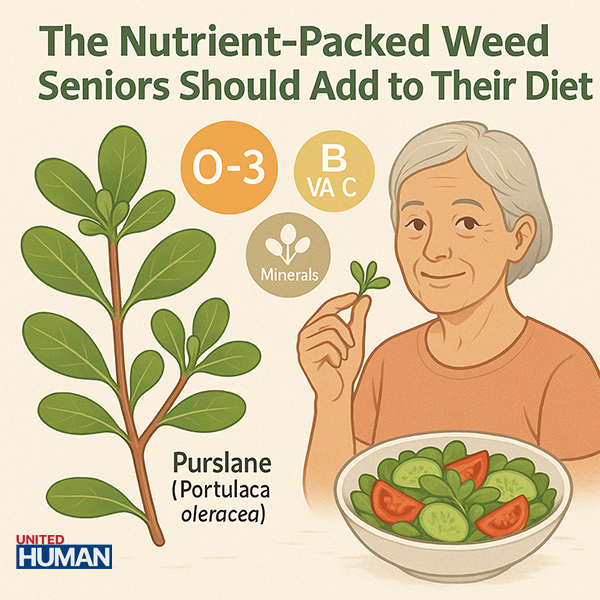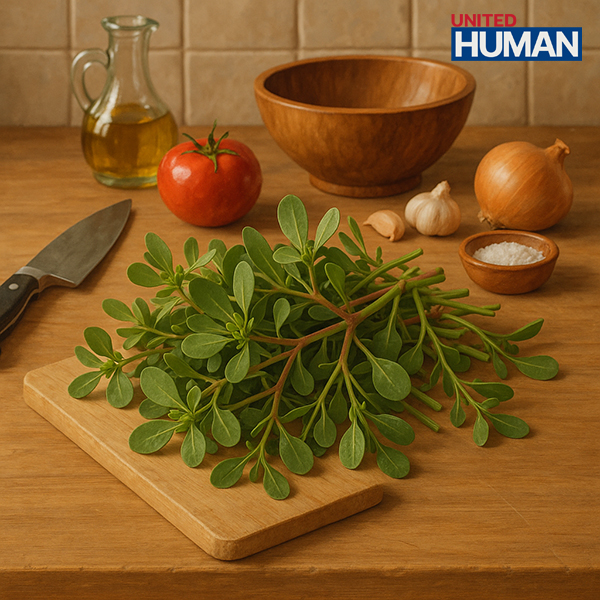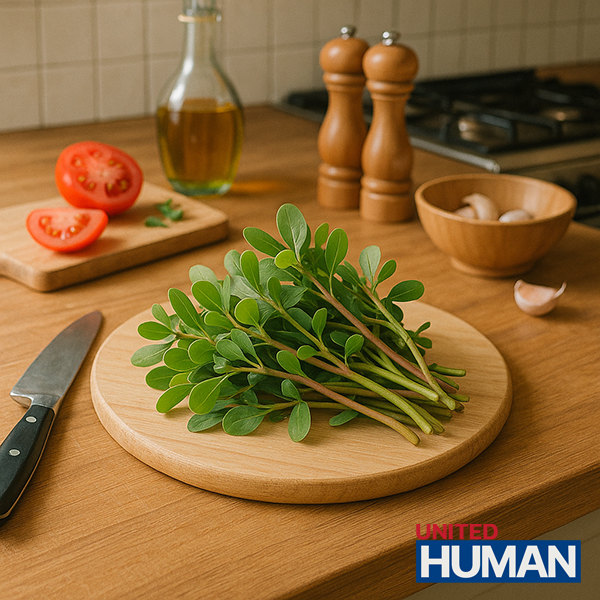Often overlooked as a mere weed, purslane (Portulaca oleracea) is rapidly gaining recognition in the wellness community as a powerful, nutrient-packed green that offers significant health benefits—particularly for adults over 50. Rich in omega-3 fatty acids, antioxidants, and essential minerals, purslane supports cardiovascular health, bone density, immune function, and more. Affordable and easy to find, it may be one of the best-kept secrets in senior nutrition.
In this article, we’ll explore why purslane deserves a place in your weekly meals, the science behind its health benefits, and how to safely enjoy it in your diet.
What Makes Purslane a Superfood for Seniors?

Purslane, sometimes known as verdolaga or little hogweed, is a succulent plant with fleshy green leaves and reddish stems. Though commonly found growing wild in gardens and fields, it is also cultivated for both culinary and medicinal purposes. According to data from the U.S. Department of Agriculture (USDA), purslane is among the most nutrient-rich leafy greens available today.
What sets purslane apart is its unusually high content of alpha-linolenic acid (ALA)—a plant-based omega-3 fatty acid rarely found in vegetables. It also provides vitamins A, C, and E, as well as vital minerals such as magnesium, calcium, and potassium, all of which are particularly important for older adults.
5 Health Benefits of Purslane for Older Adults

Based on studies and expert sources such as Harvard Health and WebMD, here are five science-backed reasons seniors should consider incorporating purslane into their diet:
1. Supports Heart Health
Purslane contains a significant amount of omega-3 fatty acids (especially ALA), which have anti-inflammatory effects and may reduce the risk of heart disease. A study published in the Journal of Ethnopharmacology suggests that purslane may help improve cardiovascular markers, including cholesterol and triglyceride levels.
2. Strengthens Bones
With generous levels of calcium and magnesium, purslane helps maintain strong bones and reduce the risk of osteoporosis—a major concern as we age. Research in the American Journal of Clinical Nutrition supports the role of these minerals in slowing bone loss and improving skeletal strength.
3. Fights Inflammation
Purslane is loaded with antioxidants, including vitamin C, vitamin E, and beta-carotene. These compounds help neutralize free radicals and reduce chronic inflammation, which can contribute to joint pain, heart disease, and cognitive decline in older adults.
4. May Aid Blood Sugar Management
Early research, including a study in the Journal of Research in Medical Sciences, shows that purslane seeds may help regulate blood sugar in individuals with type 2 diabetes. While more studies are needed, it may serve as a helpful addition for those managing glucose levels.
5. Boosts Immune Function
Vitamin C is vital for immune health, and purslane offers a healthy dose. As the immune system naturally weakens with age, including immune-supportive foods like purslane can help the body better fend off infections and seasonal illnesses.
How to Safely Add Purslane to Your Diet

Purslane is not only highly nutritious, but also remarkably versatile. Here are several enjoyable ways to include it in your meals:
-
Fresh in Salads: Add raw purslane leaves and stems for a tangy, slightly lemony crunch. Combine with tomatoes, cucumbers, and a drizzle of olive oil to boost fat-soluble vitamin absorption.
-
Lightly Cooked: Sauté in olive oil with garlic for 4–5 minutes as a side dish, or add to soups, stews, and omelets for added flavor and nutrition.
-
In Smoothies: Blend fresh purslane with fruits like banana, apple, or berries for a nutrient-dense green smoothie.
-
As a Garnish: Sprinkle over grilled fish, rice bowls, or scrambled eggs for a refreshing burst of flavor and health benefits.
📝 Recommended Serving: Start with 1–2 cups of purslane per week. A ½-cup serving (approximately 43 grams) provides only 8.6 calories but is rich in nutrients.
How to Source and Store Purslane
Whether you’re buying purslane or harvesting it yourself, it’s important to select clean, safe sources:
-
Harvest Responsibly: If collecting it from your garden, avoid areas treated with pesticides or located near roads (due to lead or other pollutants). Choose young plants, around 5–6 inches tall, for the best flavor and texture.
-
Buy Fresh or Frozen: Available at farmers’ markets and some health food stores. Look for bright green, unwilted leaves. Frozen purslane is a practical alternative when fresh options are unavailable.
-
Preparation Tips: Rinse thoroughly to remove soil from crevices. Pat dry before using. Store in a paper bag in the refrigerator for up to 3–4 days to maintain freshness.
Precautions: What Seniors Should Know Before Eating Purslane

While generally safe for most people, there are a few considerations for older adults:
-
High Oxalate Content: Purslane contains oxalates (671–869 mg/100g), which may increase the risk of kidney stones in susceptible individuals. If you have a history of kidney stones, limit consumption and consult your doctor.
-
Medication Interactions: Purslane’s potassium and omega-3s may interact with medications for blood pressure or blood thinning (e.g., warfarin). Always check with your healthcare provider before making significant dietary changes.
-
Potential Allergies: Though uncommon, allergic reactions like itching or digestive upset can occur. Discontinue use if symptoms appear and seek medical advice.
-
Moderation is Best: Too much fiber or oxalate-rich food may cause digestive discomfort. Begin with small amounts and increase gradually.
Purslane as Part of a Holistic Health Routine
Nutrition works best when combined with other healthy habits. The CDC recommends a balanced diet rich in vegetables, fruits, lean protein, and whole grains. Pair purslane with foods like salmon, avocado, or walnuts to boost omega-3 intake. Regular physical activity, such as daily walks or gentle stretching, can further support bone health and mobility.
Start by incorporating purslane into one or two meals each week. Invite a friend or family member to join you—it’s a great way to make healthy eating more enjoyable and sustainable.
Final Thoughts: Embrace Purslane for Vibrant Senior Living
Purslane isn’t just a weed—it’s a powerful plant bursting with nutrition that can support longevity and vitality in older adults. Its heart-healthy fats, bone-supporting minerals, and inflammation-fighting antioxidants make it a smart, affordable choice for anyone over 50 looking to enhance their well-being.
By incorporating purslane into your weekly diet and consuming it in moderation, you’ll not only enjoy its health benefits but also add variety and flavor to your meals. Try a new recipe, share it with someone you love, and take one more step toward a healthier lifestyle.
